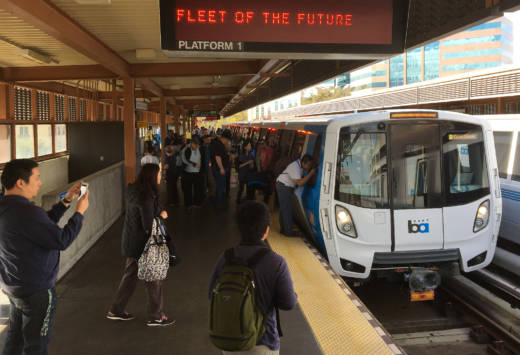BART says it has unraveled two problems that delayed the debut of its new train cars and -- wait for it -- the agency could begin carrying paying passengers on its Fleet of the Future by mid-December.
The new cars suffered an embarrassing failure earlier this month with inspectors from the California Public Utilities Commission on board -- with a 10-car train deciding it was actually a three-car train and doors on seven of 10 cars refusing to open.
The agency has been subjecting the new cars to rigorous testing for more than a year. With 10 cars of the eventual 775-car fleet on hand, the agency had hoped to begin carrying passengers this week.
BART spokesman Jim Allison said Monday that the cars' manufacturer, Montreal-based Bombardier, had traced the failure to two issues: fluctuating voltage in the electrical cable connecting the 10 cars and a failed circuit board that prevented doors from opening.
Allison said the fluctuating voltage caused the train to go into a safe mode that recognized only three cars as operational.
